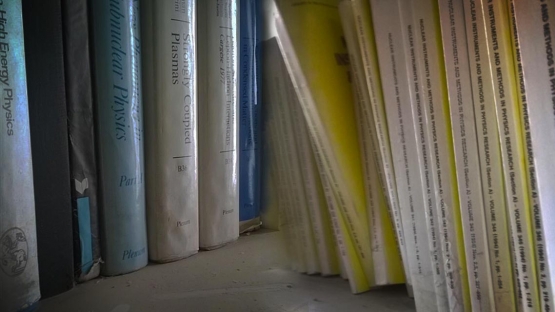More than 1000 destroyed research papers on high-energy physics and astrophysics have been recovered in Armenia thanks to digital copies saved at the IAEA’s International Nuclear Information System (INIS).
For over 25 years, without sufficient government funds to support the library of the Yerevan Physics Institute (YerPhI), the thousands of research papers it held were locked away in dusty storage rooms. They have become so dirty that it is impossible to clean them without causing damage.
“In the 60s, 70s and 80s we distributed our research papers among all large laboratories and transferred them to the IAEA,” said Ashot Chilingarian, Director of YerPhI. “Fortunately, INIS had digitized and preserved all the archives, which are now accessible to us in digital form. They have been literally saved.”
In May this year, right after YerPhi was granted the status of National Laboratory, its management asked the IAEA for help to reconstruct the old archives. IAEA staff provided them with the research papers in digital form and assisted them in setting up a digital scientific repository. Through the repository, the team has made all the recovered research papers available via a dedicated web site.
Scientists at YerPhI conduct research in the fields of high-energy physics and astrophysics and collaborate with international partners using the world’s biggest accelerators and cosmic ray detectors, Chilingarian said. They have been collaborating in international experiments since the 1980s. Today, YerPhI publishes approximately 30% of Armenia’s research papers and plans to add all new research publications to the repository.
“The project has not only allowed YerPhI to acquire and reuse the lost scientific information, but has also introduced modern technologies to support the operation of Armenia’s research facilities,” said Zaven Hakopov, INIS coordinator at the IAEA. Based on Armenia’s example, the IAEA plans to assist more Member States in creating national nuclear information repositories to stimulate research and development, he added.
The IAEA hosts one of the world's largest collections of published information on nuclear science and technology with four million bibliographic records accessed by over two million users world-wide every year. It gathers nuclear data, information and knowledge resources on the peaceful use of nuclear energy and makes it available to its Member States, contributing to advancing research and development and helping countries achieve the United Nations Sustainable Development Goals.


